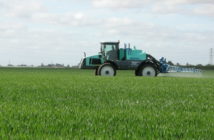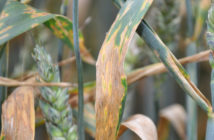With sugar beet prices up compared to last year – by as much as 50% in some cases – Adama has recommended that effective weed control measures are put in place.
Phenmedipham-based herbicides have been prominent within sugar beet crop protection programmes in recent years, but as weed populations have diversified and legislative changes have forced less effective concentration formulas, Adama said it is more important than ever to combine active ingredients.
Through the application of metamitron and quinmerac-based herbicides, weed control programmes can be enhanced as the inclusion of these active ingredients can give a 10-20% yield increase. The inclusion of pre-emergence herbicides enables growers to target a wider range of weeds including cleavers, bindweed, black nightshade, fool’s parsley and common field speedwell.
Adama recommends that crops which miss out on herbicide application at the optimum time should be prioritised for a pre-emergence treatment as the application of a residual herbicide will ensure these crops are protected ahead of time. Likewise, a pre-emergence application will also be useful on land with a high weed burden to ‘soften up’ weeds ahead of a subsequent post-emergence treatment.
Because modern sugar beet varieties are so quick to germinate, pre-emergence herbicides should ideally be applied within 24-48 hours of drilling and certainly within a maximum of five days after drilling.
Split field trials carried out by ADAMA have shown that the addition of it’s Goltix Titan product at the beginning of a pre- and post-emergence programme provides superior weed control compared to programmes which rely solely on contact action at post-emergence.




